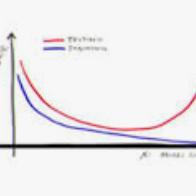Grover's algorithm is a well-known contribution to quantum computing. It searches one value within an unordered sequence faster than any classical algorithm. A fundamental part of this algorithm is the so-called oracle, a quantum circuit that marks the quantum state corresponding to the desired value. A generalization of it is the oracle for Amplitude Amplification, that marks multiple desired states. In this work we present a classical algorithm that builds a phase-marking oracle for Amplitude Amplification. This oracle performs a less-than operation, marking states representing natural numbers smaller than a given one. Results of both simulations and experiments are shown to prove its functionality. This less-than oracle implementation works on any number of qubits and does not require any ancilla qubits. Regarding depth, the proposed implementation is compared with the one generated by Qiskit automatic method, UnitaryGate. We show that the depth of our less-than oracle implementation is always lower. This difference is significant enough for our method to outperform UnitaryGate on real quantum hardware.
翻译:Grover的算法是对量子计算的一个众所周知的贡献。 它在未经排序的序列中搜索一个值比任何古典算法都快。 这个算法的一个基本部分是所谓的神器, 一种量子电路, 代表与理想值相对的量子状态。 它的概括化是振幅放大的神器, 标志着多重想要的状态。 在这个工作里, 我们提出了一个古典算法, 用来为振幅放大建立一个阶段标记器。 这个神器运行的比操作的要小, 代表自然数的标记状态比给定的要小。 模拟和实验的结果都证明了它的功能。 这个小于神器的运行效果, 不需要任何数量qubits。 关于深度, 拟议的执行比Qiskit自动法生成的神器 UnitaryGate 比较。 我们显示, 我们的不那么大, 执行的深度总是要低。 这个差异对于我们的方法在实际量子硬件上比UnitarateGate 。</s>



